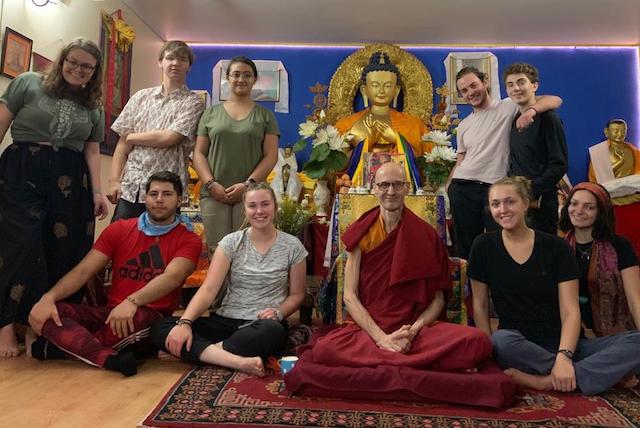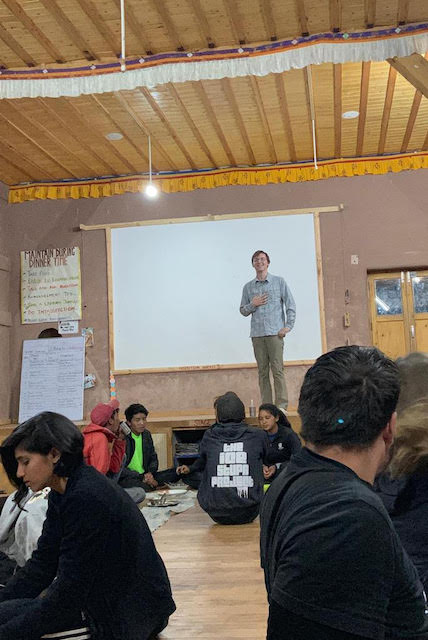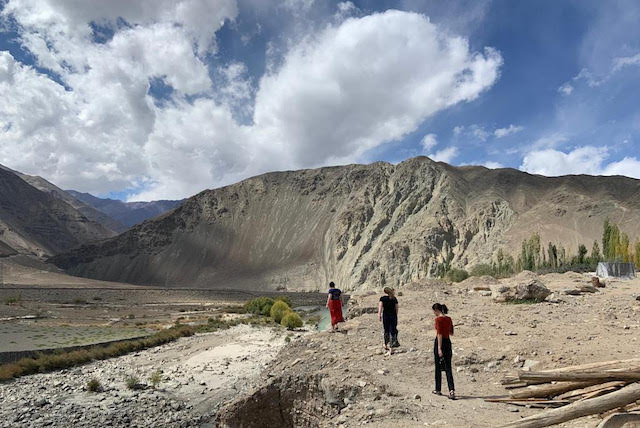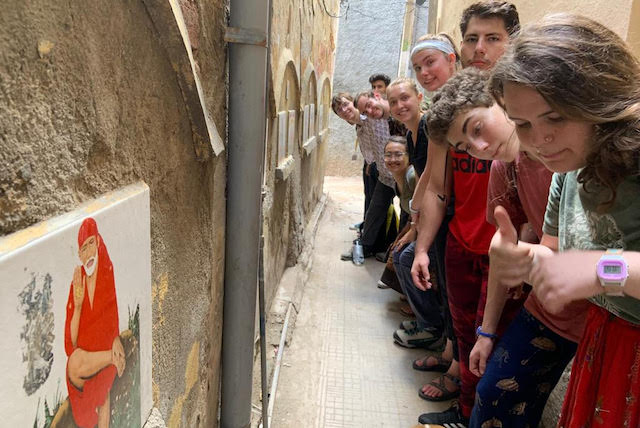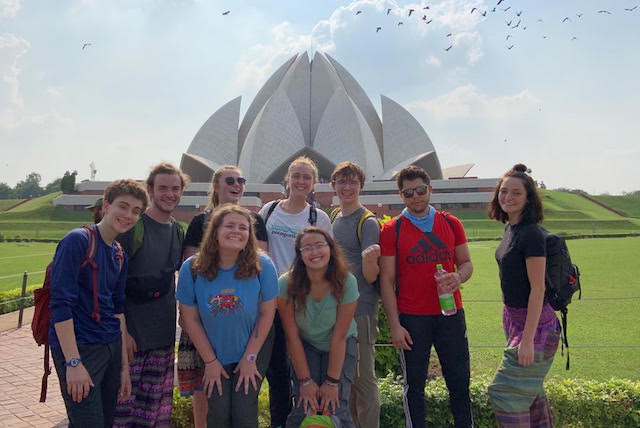
The past few days, we’ve been treated to a lavish smorgasbord of religion. On Tuesday, we began the day by attending a lengthy meditation service with an English-born Tibetan Buddhist monk. Rather than talk about religion, he spoke to us about the environment, saying that everyone needs to learn to “settle for less” – a very Buddhist statement, even though his speech could equally have come from the mouth of Greta Thunberg. Personally, I believe that the reason there is climate change denial and inaction on ocean pollution in the first place is because people already associate living sustainably with settling for less, and nobody is willing to settle for less. But if people are going to, we need more people like the monk we met, who managed to take unpalatable statements and frame them in a way that was convincing even to non-Buddhists. He seemed just as much a politician as he was a man of peace.
After the monk’s speech, during which we all sat in a spine-stiffening lotus position, we got up to stretch our legs and have a snack of tea and oranges. I cannot emphasize this enough: the oranges were green. On the outside, they looked like limes; peel them, and there was a perfectly ordinary orange inside. It seemed exactly like the sort of food a Buddhist monk should serve – a sort of edible koan. One hand clapping. Green oranges.
I’ve long thought that all religions are on a spectrum, from loose to organized. Buddhism is on the free end of the spectrum. It is up to the individual worshipper to decide how to worship. Catholic Christianity probably occupies the other end of the spectrum. With its governing board of the Pope and his cardinals, its closely guarded list of verified Marian apparitions, and strict criteria as to who can be canonized, the Catholic Church seems almost as much a nation-state as it is a religion. There’s just as much of a draw to that as there is to the decentralized nature of Buddhism – you feel like you know exactly what you’re supposed to do. We got exposed to both ends of the spectrum on the same day by also visiting the Mother Theresa House in Delhi.
The next day, we concluded our exploration of religion in Delhi by going to the Lotus Temple, one of nine major Baha’i centers of worship worldwide. It’s an extraordinary building, surrounded by an oasis of lush gardens in the middle of dusty south Delhi. The temple itself was fascinating, equal parts Antoni Gaudi and Eero Saarinen, but the real draw was the museum on the grounds, where we learned all about the origins of the Baha’i faith. I barely knew anything about the faith before visiting, and was amazed to learn that it was essentially a syncretism of all world religions – Zarathustra, Abraham, Buddha, Jesus, and Mohammed, as well as four others, are all revered as prophets. The eventual goal of the Baha’i faith is to integrate all religions into one. I’m not sure where Baha’i falls on the simple-to-organized spectrum, but it seems truer to its ideals than any other religion I know, and how can you hate a religion of all religions in one? If I ever join an organized religion, it’ll be Baha’i.
– Tor
